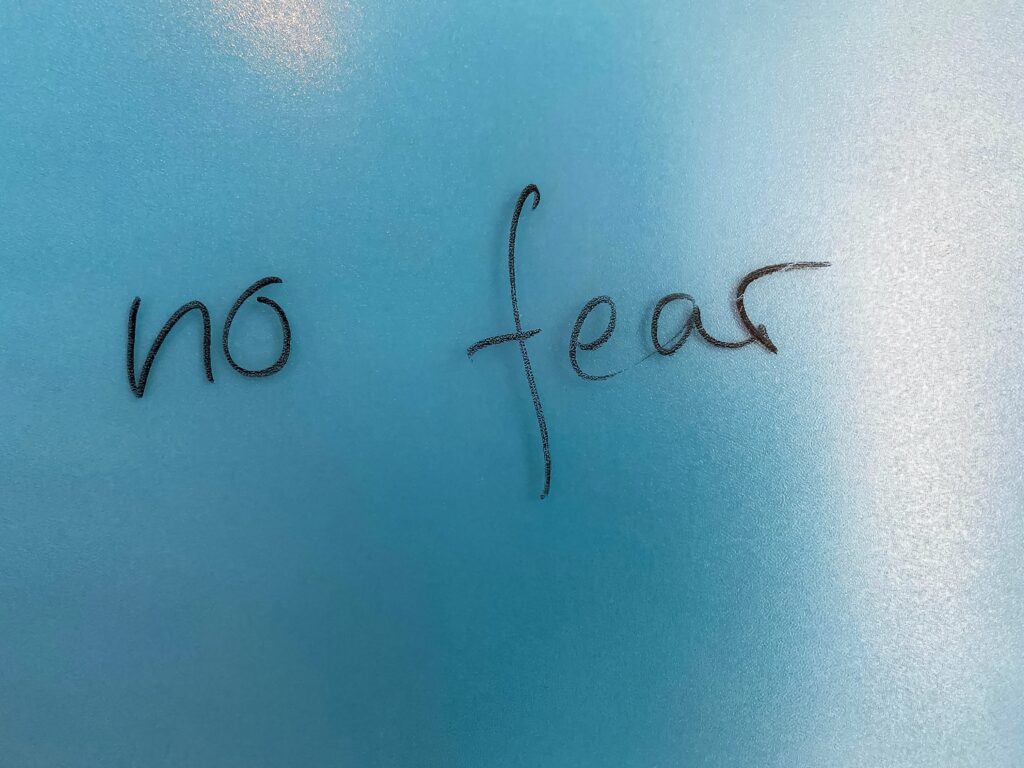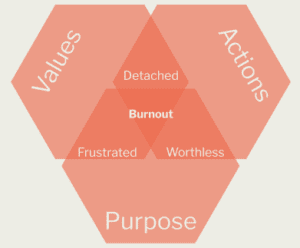
Understanding Workplace Burnout
In today’s fast-paced world, workplace burnout has become an all too common affliction, silently plaguing individuals and teams alike. The constant pressure to perform, coupled with demanding deadlines and high expectations, can lead to a gradual erosion of motivation and well-being. This article aims to shed light on the enigmatic concept of workplace burnout, exploring its origins, its impact on individuals and teams, and providing practical strategies to recognise, prevent, and overcome this pervasive phenomenon.
What is burnout at work?
Burnout at work is a silent adversary that creeps into the lives of dedicated professionals, affecting their physical and emotional well-being. It goes beyond the occasional fatigue or momentary stress that accompanies a challenging day at the office. Instead, it manifests as a relentless state of chronic physical and emotional exhaustion, leaving individuals drained and depleted.
Burnout does not discriminate based on experience or tenure. Seasoned professionals who have dedicated years to their craft can find themselves battling burnout just as much as enthusiastic newcomers. The seeds of burnout can be sown by various factors lurking within the work environment, waiting for the opportune moment to take root and flourish.
What influences burnout in teams and individuals?
What are the driving forces that conspire to push individuals and teams towards the edge of burnout? Let’s unravel the intriguing web of influences that can shape the burnout experience.
- The Grind of Endless Demands: Imagine a whirlwind of tasks swirling around, leaving individuals gasping for a breath of respite. The relentless pressure to meet deadlines, handle multiple projects simultaneously, and constantly deliver exceptional results can leave even the most resilient individuals susceptible to burnout. It’s like a never-ending marathon with no finish line in sight, gradually draining their energy and enthusiasm.
- The Struggle for Work-Life Harmony: In today’s hyper-connected world, the boundaries between work and personal life often blur, further fueling the burnout fire. The constant barrage of emails, notifications, and work-related obligations seep into every corner of one’s existence, leaving little room for relaxation and rejuvenation. As individuals find it increasingly challenging to strike a balance between professional and personal commitments, burnout looms closer, ready to engulf them.
- Toxic Work Culture: Picture a toxic work environment where negativity, competition, and distrust prevail. In such settings, burnout thrives like a parasitic vine, choking the life out of individuals and teams. Unhealthy competition, lack of collaboration, and an absence of appreciation and support can erode morale, leaving individuals feeling isolated and unfulfilled. When employees are unable to find solace and encouragement within their workplace, burnout becomes an inevitable consequence.
- Ignored Passions and Unmet Needs: Human beings are multifaceted creatures with diverse interests, aspirations, and needs. However, when individuals find themselves trapped in roles that don’t align with their true passions or when their core needs for growth and recognition go unaddressed, burnout rears its ugly head. The nagging feeling of dissatisfaction and unfulfilled potential can chip away at one’s resilience, making them more susceptible to the clutches of burnout.
- The Disconnected Puzzle Pieces: Imagine a team where communication is scarce, collaboration is minimal, and each member operates in isolation. This fragmented landscape makes it difficult to achieve shared goals, nurture synergy, and foster a sense of belonging. Without a cohesive team spirit and a shared vision, individuals can feel adrift, further amplifying the risk of burnout.
By exploring these intricate facets that influence burnout, we gain a deeper understanding of the challenges individuals and teams face. Recognising these influences empowers us to cultivate environments that prioritise well-being, foster creativity, and promote sustainable success. With proactive measures in place, we can unravel the chains of burnout, paving the way for a harmonious and fulfilling work experience.
How do you recognise the signs of burnout?
Embarking on the journey to identify the signs of burnout is like deciphering the cryptic language of our bodies and emotions. By tuning in to the subtle cues they send us, we can uncover the telltale signs that something deeper is amiss. Here are the signs to be attentive to:
- The Weary Weight of Exhaustion: Imagine a relentless heaviness that accompanies you day in and day out, no matter how much sleep you get. Physical and emotional exhaustion is one of the hallmark signs of burnout. Your body feels perpetually fatigued, and even small tasks become overwhelming. You may find it difficult to summon the energy to engage in activities you once enjoyed.
- The Erosion of Passion: Picture a flame that once burned bright, fueling your enthusiasm and dedication. When burnout takes hold, that flame flickers and fades. You may notice a loss of interest and motivation in your work, as if the spark that ignited your passion has been dampened. Tasks that once excited you now feel monotonous and draining.
- The Frustration of Reduced Accomplishment: Imagine reaching the end of a day, a week, or a month, only to feel a sense of emptiness and dissatisfaction. Burnout often brings about a nagging feeling of reduced accomplishment. Despite your efforts, it may seem as though you are spinning your wheels, unable to achieve the level of productivity and success you once did. This diminished sense of achievement can further contribute to the downward spiral of burnout.
- The Detachment from Work: Picture a disconnection between yourself and the work you once found meaningful. Burnout can foster a sense of cynicism and detachment, where you no longer feel emotionally invested in your tasks or the goals of your organisation. You may find yourself mentally checking out, going through the motions without genuine engagement. This detachment can erode your sense of purpose and fulfilment.
- The Physical and Emotional Warning Signs: Imagine your body and mind sounding alarm bells, urging you to pay attention. Burnout can manifest in physical symptoms such as headaches, muscle tension, changes in appetite or sleep patterns, or even a weakened immune system. Emotionally, you may experience increased irritability, mood swings, anxiety, or a sense of hopelessness.
Recognising these signs of burnout requires a keen awareness of your own well-being. Take the time to listen to your body and reflect on your emotions. If you notice these signs persisting and impacting your daily life, it may be an indication that burnout has taken hold. Remember, acknowledging the signs is the first step towards regaining balance and reclaiming your well-being.
How to avoid, reduce, and overcome workplace burnout
Workplace burnout is a pervasive issue that can have detrimental effects on individuals and organisations. To address and mitigate this phenomenon, it is crucial to focus on prevention, reduction, and overcoming strategies.
Prevention starts with prioritising self-care and establishing a healthy work-life balance. Take time for activities that nourish your well-being outside of work, whether it’s engaging in hobbies, spending time with loved ones, or practising self-reflection. Set clear boundaries to ensure that work doesn’t encroach on your personal life, and vice versa. By nurturing your physical and emotional well-being, you create a solid foundation for resilience against burnout.
Reducing burnout requires a multi-faceted approach. Start by assessing your workload and identifying areas of excessive pressure or unrealistic expectations. Communicate with your superiors and colleagues to discuss workload distribution, delegation of tasks, or potential adjustments. Collaboration and open communication can contribute to a more manageable workload and decrease the risk of burnout. Additionally, fostering a supportive work culture is essential. Encourage empathy, teamwork, and regular check-ins to address concerns and challenges. By creating an environment that values well-being and supports one another, you foster a collective effort to reduce burnout.
Overcoming burnout is a journey that begins with self-reflection. Take the time to reconnect with your values, passions, and career goals. Evaluate whether your current tasks and responsibilities align with your interests and strengths. Seek opportunities to realign your work with your intrinsic motivations, as this can reignite your sense of purpose and fulfilment. Moreover, seeking support is crucial when overcoming burnout. Reach out to trusted colleagues, mentors, or professional counsellors who can provide guidance, perspective, and encouragement. Sharing experiences, seeking advice, and receiving emotional support can help you navigate the challenges of burnout and regain a sense of control and motivation.
In conclusion:
By implementing these prevention, reduction, and overcoming strategies, individuals and organisations can combat workplace burnout. Remember that it is an ongoing process that requires ongoing attention and effort. By prioritising well-being, fostering supportive environments, and seeking support, we can create a healthier and more sustainable work experience for everyone involved.
Ready to combat workplace burnout and create a healthier work experience? Together, let’s break free from the clutches of burnout and build a work environment that promotes resilience, well-being, and sustainable success.













































